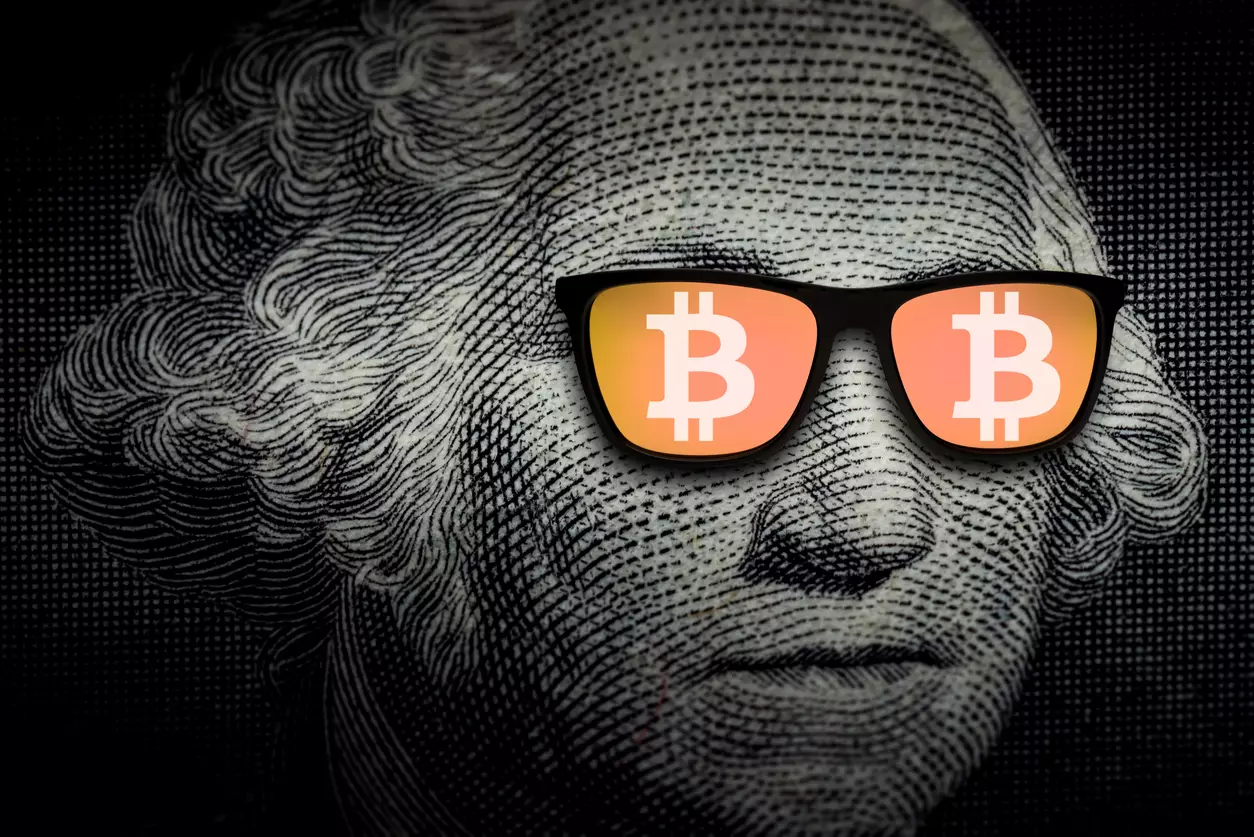The world of cryptocurrency has always been one driven by volatility and unpredictability, yet recent behaviors in Bitcoin’s price have shocked even seasoned traders. Analysts and investors are grappling with the cryptographic giant’s apparent decoupling from traditional economic indicators. Historically, we understood Bitcoin’s relationship with factors such as the US Dollar Index (DXY) and Treasury yields. Following these sacred rules of macroeconomics, one would anticipate that as safe-haven assets like government bonds gain traction, Bitcoin would fall victim to the pull of risk aversion. However, the present scenario presents a striking and perplexing divergence.
What we are witnessing is a brand-new paradigm. While Treasury yields have spiked and the DXY has remained robust, Bitcoin has spiraled upwards, defying the expectations of rational investment behavior. The pseudonymous analyst known as Darkfost pointed out that while yields surge and investor sentiment typically shifts away from risk assets, Bitcoin is emerging as a new kind of store of value—one that may not align with historical financial paradigms. This development demands our attention, as it signals a fundamental shift in how investors perceive and utilize Bitcoin.
The Impact of Geopolitical Turmoil
The geo-economic landscape recently bore witness to escalating tensions between Israel and Iran. Typically, such conflicts would send shockwaves through global markets, causing investments to converge towards stability, often at the detriment of riskier assets like Bitcoin. Yet, Bitcoin’s sustained upward momentum amid this chaos illustrates its growing reputation as a refuge. Investors now lean on Bitcoin not just as a speculative tool but as a viable alternative to traditional safe-havens.
This newfound perception taps into a broader narrative of independence from central banking; as monetary policy decisions unfold globally, Bitcoin seems to be carving its own path. While traditional assets have a history of reacting predictably to geopolitical strife, Bitcoin’s fortitude in the face of such uncertainty may mark its evolution. It poses crucial questions about the role cryptocurrencies will play in future financial ecosystems, raising the stakes not just for traders but for policymakers and financial institutions alike.
Investor Sentiment and Changing Dynamics
The minds of the investing public are churned by information overload. Within this crucible of data, Darkfost’s insights provide a window into the psyche of modern investors. Many now possess an acute awareness of external financial indicators. They are, in essence, trying to decipher threads from a complex tapestry of macroeconomic signals, mingling with their own speculative impulses. The question arises: Are we reaching a point where Bitcoin’s price is immune to historical signals, or are investors merely intoxicated by the allure of digital gold?
In scrutinizing the blend of institutional interest, liquidity, and psychological factors, we recognize an emerging paradigm shift. When the DXY stiffens, indicating confidence in the dollar, one would expect Bitcoin to buckle under pressure. Yet, that pressure appears less effective today. This trajectory reveals that investor appetites are no longer exclusively tethered to the vagaries of traditional financial systems.
The Role of Institutional Players
As Bitcoin matures within the market landscape, institutional players have started to solidify their positions. Major financial firms investing in Bitcoin resonate with a broader societal trend that embraces digital assets as the future of finance. When institutions pour capital into Bitcoin, they not only validate it as a legitimate asset but also remove it further from the whims of traditional speculation.
This institutional involvement arguably stabilizes Bitcoin while simultaneously reshaping its market dynamics. It engenders a curious response: as fewer retail investors dictate market prices based on knee-jerk reactions to news cycles, institutions are likely to adopt a long-term viewpoint. Their interest in accumulating Bitcoin as a long-term store of value lends credence to its status as a modern safeguard against inflationary pressures rather than merely a speculative asset.
In light of these revelations, it becomes imperative to reassess our understanding of Bitcoin’s potential. The digital asset is evolving rapidly, breaking free from conventional market ties and thriving amid new financial dynamics driven by institutional interest and geopolitical phenomena. As we navigate through a stormy yet transformative era, acknowledging Bitcoin’s emergent role as a safe-haven asset might be the key to understanding its future trajectory. Those who fail to adapt may well find themselves left behind in this new chapter of financial resurgence.


Leave a Reply